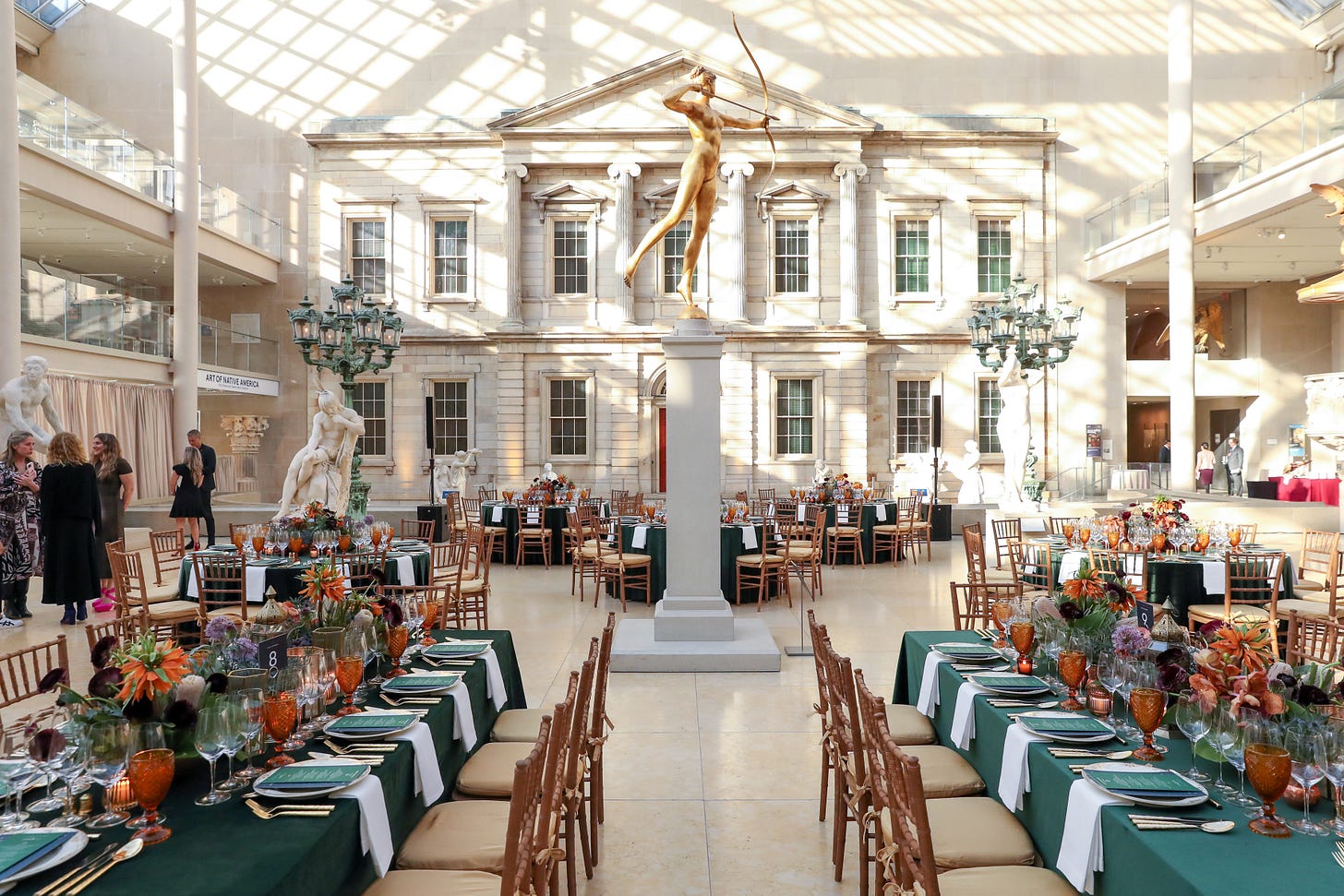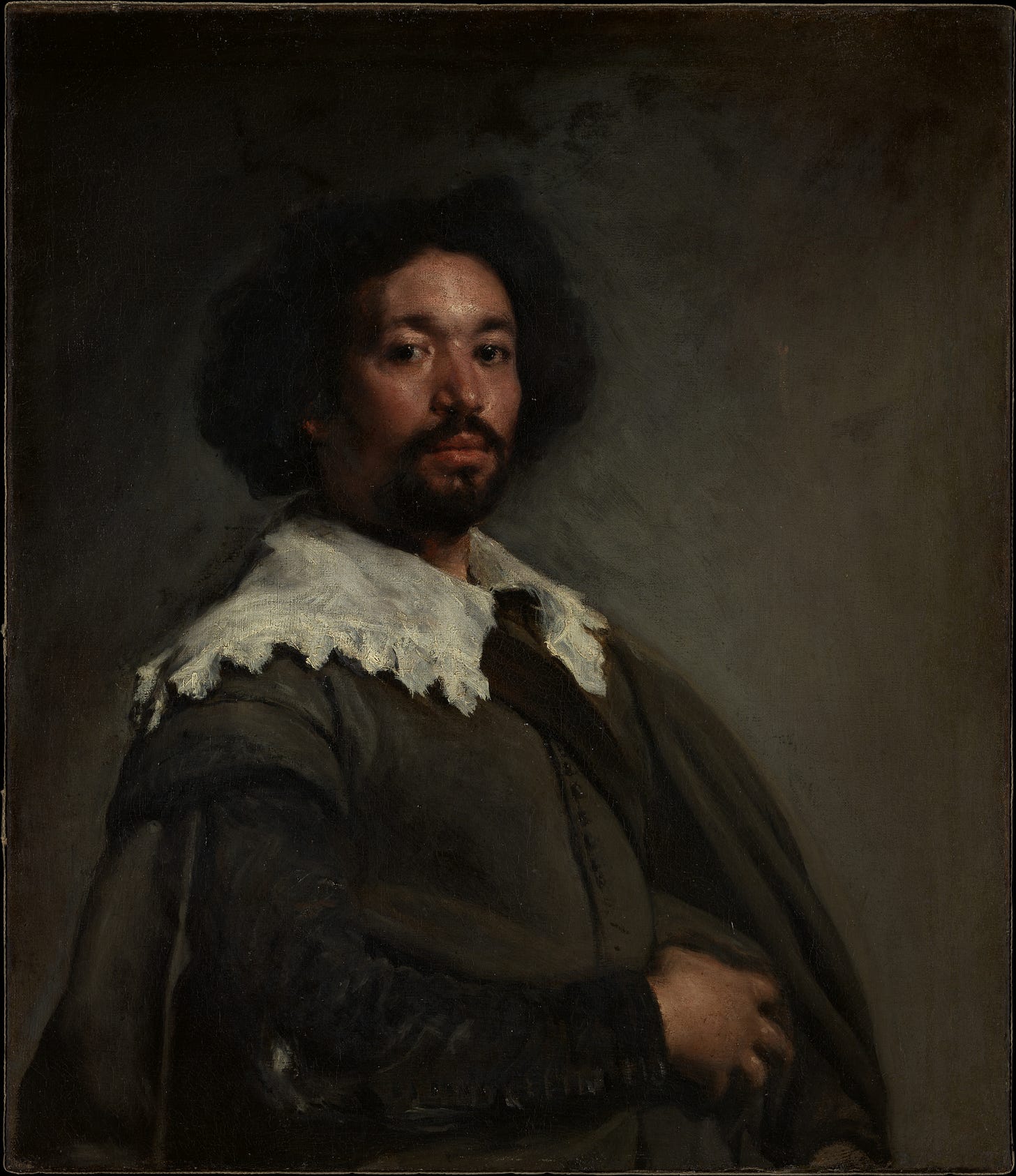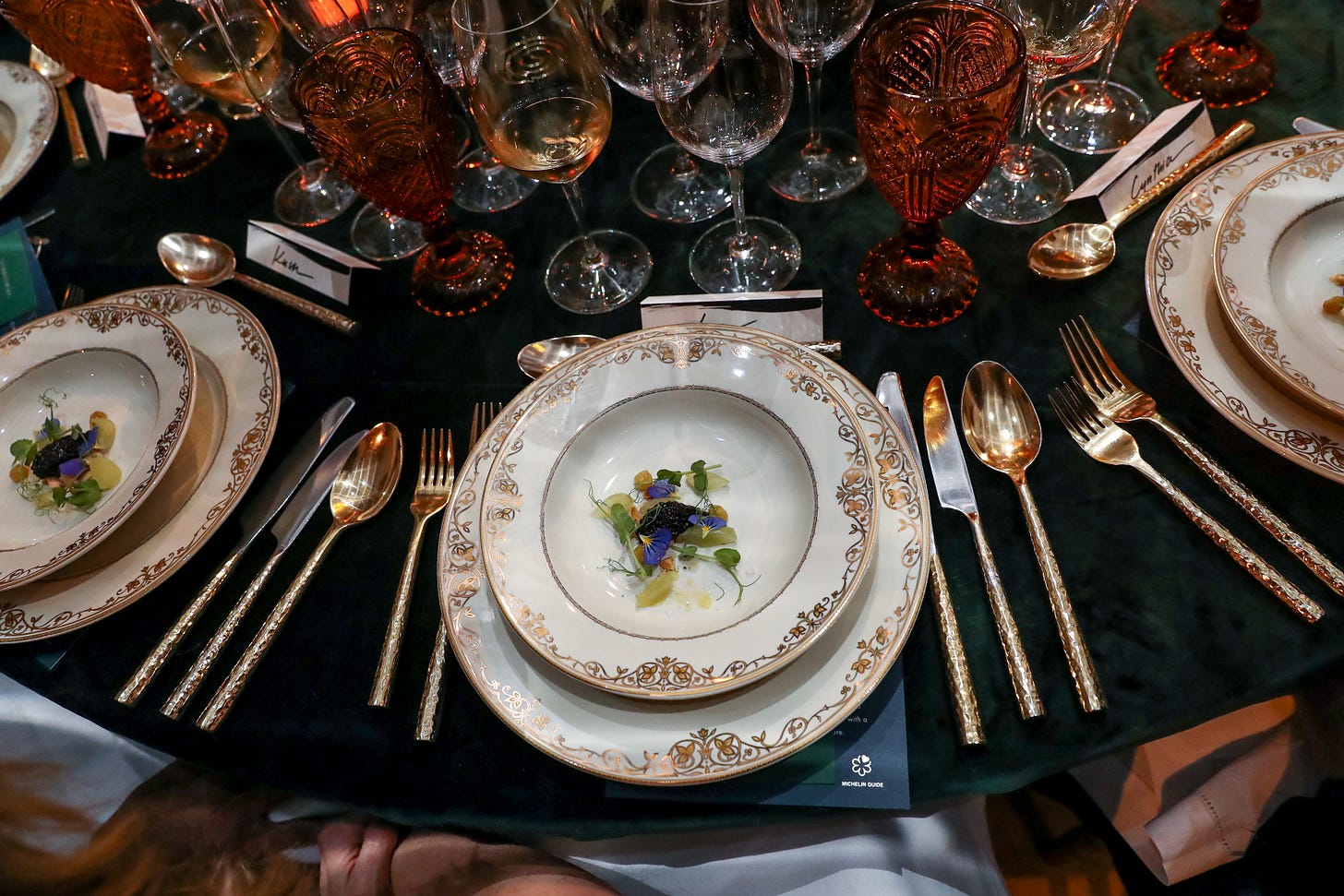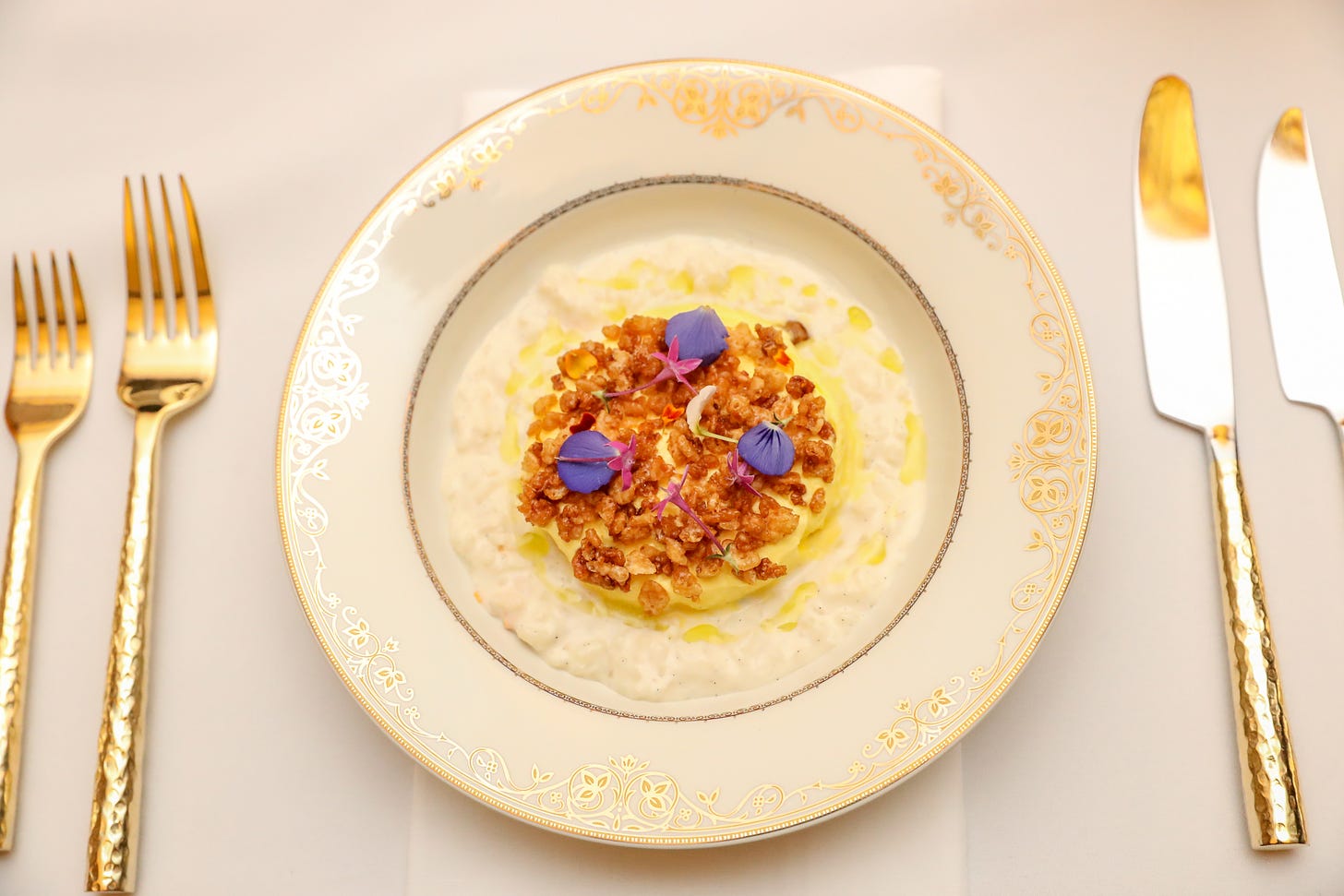Exploring history through art and food
The life of Juan de Pareja in paintings and on the plate
My friends,
Last week in partnership with Capital One Dining, I cooked a very special and intimate dinner in honor of Juan de Pareja (1608-1670)—a brilliant painter of the Spanish Renaissance—whose exhibition at the Metropolitan Museum of Art in New York City just opened.
In order to develop our menu, my team and I first had to learn a lot about de Pareja’s life, and then we made a connection between his story and each of the courses we created.
We learned that before he became a well-known painter, de Pareja was an enslaved person. He was born in Málaga, in southern Spain, the son of an enslaved Afro-Hispanic mother, Zulema, and a Spanish father, Juan, who might have been her enslaver. De Pareja and his mother were probably Morisco—descended from the Iberian Peninsula’s forcibly converted formerly Muslim population, and part of a large group of the area’s enslaved laborers—mostly of North African and sub-Saharan African origin, but also Jews and other minorities who were put to work by the artisanal workshops of goldsmiths, ceramists, carpenters, illustrators…and painters.
As he grew up, de Pareja was enslaved by the revered Spanish painter Diego Rodríguez de Silva y Velázquez as his assistant, grinding paints and stretching canvases. As he worked for Velázquez, he picked up on the skills of a painter, not content with the life of an enslaved assistant. Famously, in 1649 he joined Velázquez on a journey to Rome, when Velázquez “asked” de Pereja to sit for portrait to submit into a competition…Velázquez was trying to win permission to paint the Pope, and believed that by showing his skills in painting a “no one” like de Pareja, he would gain the Pope’s favor. In 1650, the portrait became something of a sensation in Rome and was exhibited at the Pantheon. (Velázquez’s Portrait of Juan de Pareja has been hanging in the Metropolitan Museum of Art since 1971, when it was purchased for $5.5 million, what I have learned would be about $40 million-ish in today’s dollars.)
Nine months after Velázquez painted his enslaved assistant, he freed him…there is a story, I don’t know if it’s true, that de Pareja had been hiding small pieces that he was painting around Velázquez’s studio, which was visited on occasion by the Spanish king Philip IV. When Ferdinand discovered one of the paintings, he was shocked to learn that it was painted by an enslaved person! He commanded Velázquez to free de Pareja, someone with so much talent. The freed de Pareja remained Velázquez’s assistant until Velázquez’s death in 1660, continuing to learn and develop his own style. In the years after, de Pareja did become a known artist in his own right, developing his own style that grew in a different direction than Velázquez, producing paintings that come across as lighter…less dark and somber, far more joyful and hopeful. You’ll take a look and see for yourselves.
And why do we know so much about de Pareja, the slave who became a master painter? The historian and writer Arturo Alfonso Schomburg, born in Puerto Rico to a Black midwife from St. Croix and a white merchant with roots in Germany, did a lot of digging in Spain about de Pareja’s life and work. He was exploring the lives of Black Europeans throughout history, and ended up writing an essay in 1925 in which he stated that “history must restore what slavery took away…”
So, my friends, how did we approach creating a menu to reflect this complicated man’s journey from slavery to celebrated painter? We tried to find ways to make some connections to his life through ingredients, recipes, and culinary traditions. We leaned on the Moorish influence on Spanish culture and cuisine which my daughters Carlota, Inés, and I explored in Episode 2 of José Andrés and Family in Spain, when we journeyed through Andalucía (if you watched the episode, you might remember that Spanish words that begin with “al”—alcachofa, for artichoke, or almendra, for almond—are Arabic.
We added many Moorish and Moroccan elements on the menu. We served buñuelos de bacalao, a famous cod fritter that (legend says) was created in the 13th century by the Arab residents of Seville when the city was under siege by King Ferdinand III of Castile…they had to come up with new ways to feed themselves and had a surplus of cod, so they created this dish that we are still making, 800 years later! (Someday I will tell you about Bacalao al pilpil, a Basque dish with a similar history…!)
We served a beautiful tuna that was caught in the traditional Almadraba of Andalucía. The almdadraba is an ancient Phoenician method of fishing that’s been practiced for thousands of years…its name stems from Arabic (al-!) and means a place of fighting. The method uses a maze of nets that lead the tuna to a circular central trap surrounded by boats; but only the largest adult tuna are caught...the smaller and younger ones are set free into the ocean, making this ancient technique of fishing sustainable.
Our dessert course as Arroz con leche, another import from the Arab world to Spain, especially as rice became more and more popular in southern Spain during the Middle Ages. The dish had saffron, which likely originated in Persia and has Arabic roots (za’afran), and was introduced to Spain more than 1,000 years ago, as well as Medjool dates, which originated in Morocco, and were once reserved for Moroccan royalty.
Our wines, too, reflected the areas of Juan de Pareja’s life…an unfortified white wine from Cadiz (the land where Sherry comes from), a Syrah from Morocco called, appropriately, Syrocco, and a sweet Moscatel from Málaga—de Pareja’s birthplace.
If you have a chance, I hope you’ll go to the Juan de Pareja exhibition which is open now through July 3rd. You will see the works that tell the story of his life and evolution as a painter and a man, including rarely seen paintings. You’ll also see works from Spain’s Black and Morisco populations like Francisco de Zurbarán, Bartolomé Esteban Murillo, and Diego Velázquez, including that famed Portrait of Juan de Pareja and the original documents that gave de Pareja his official freedom. And if you don’t live in New York, or don’t have a chance to see the exhibit, maybe you can learn more about the history of Al Andalus in southern Spain, the long connection to the Arab world.
Let me know what you think of the show, I’d love to hear your impressions and what the show meant to you.








Thank you for this very interesting story!
What an interesting story, Jose! I'm not going to get to see the paintings in person but will look on the internet.
San Francisco's Legion of Honor has a show right now that I did see-John Singer Sargent in Spain. Let's me just say WOW! Many of the spectacular paintings were of the south of Spain, Seville, Granada etc. and brought me back to wanting to return. He happened to be a student of Valesquez, after the painter's death of course, but learned his style and it shows in his work.
I am inspired by the way you used what you learned to create a menu Juan de Pareja would understand and relate to. It sounds delicious too!
Thanks for sharing!